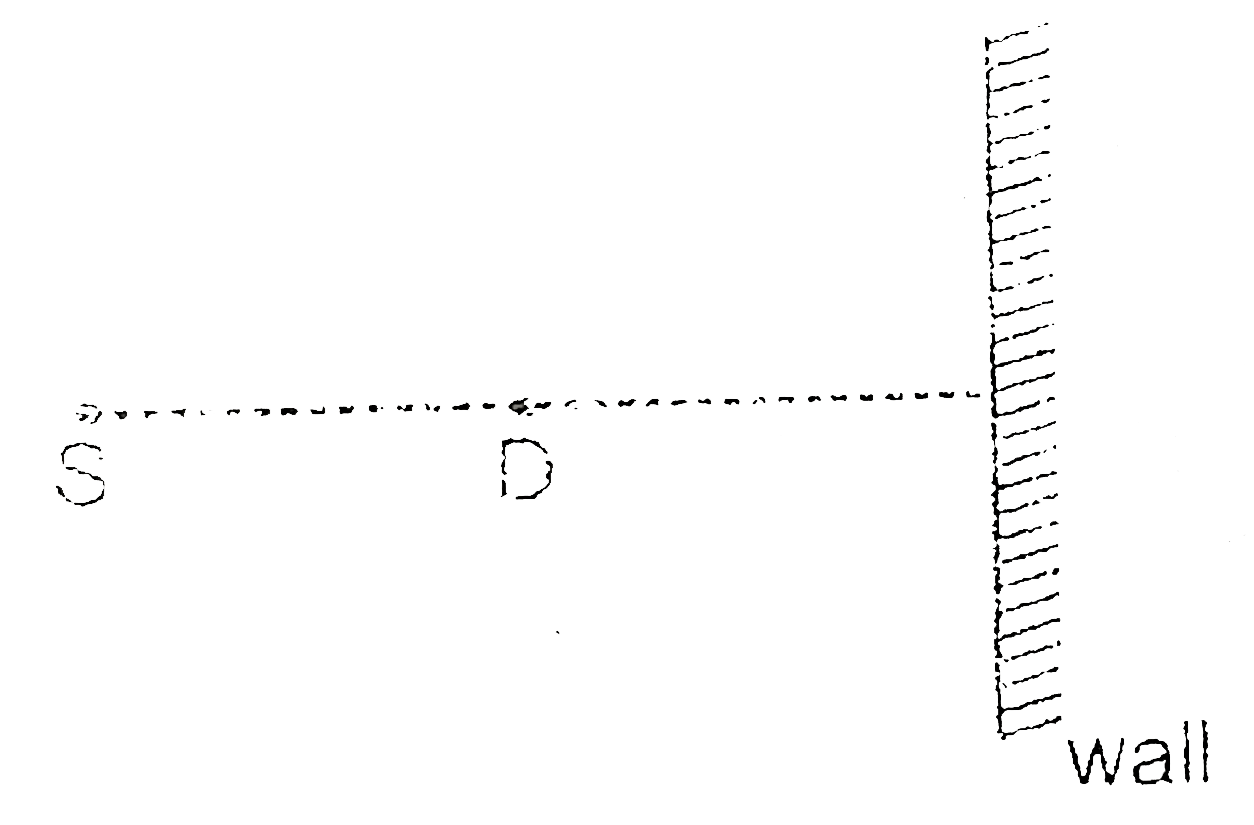Two loudspeakers are, diriven by a common oscillator and amplifier, are arranged as shown. The frequency of the oscillator is gradually-increased from-zero and the detector at D records a series of maxima and minima. If speed of sound is 330 m / s , then what is the frequency (in Hz ) at which the first time a maxima is heard.
'(##CEN_KSR_PHY_JEE_C17_E01_029_Q07##)'
The correct Answer is:330
Topper's Solved these Questions
Similar Questions

Two loudspeakers L1 and L2 driven by a common oscillator and amplifier, are arranged as shown. The frequency of the oscillator is gradually increased from zero and the detector at D records a series of maxima and minima. If the speed of sound is 330ms−1 then the frequency at which the first maximum is observed is
View Solution
Two loudspeakers L1 and L2 driven by a common oscillator and amplifier, are arranged as shown. The frequency of the oscillator is gradually increased from zero and the detector at D records a series of maxima and minima. If the speed of sound is 330ms−1 then the frequency at which the first maximum is observed is
View Solution
Knowledge Check

Two loudspeakers L1 and L2 driven by a common oscillator and amplifier, are arranged as shown. The frequency of the oscillator is gradually increased from zero and the detector at D records a series of maxima and minima. If the speed of sound is 330ms−1 then the frequency at which the first maximum is observed isA165HzB330HzC496HzD660Hz
A police car moving at 40 m / s chases a thief running away at speed of 30 m /s. The track is perpendicular to a stiff cliff as shown. The police man blows a hom at 40 Hz. If sound has a speed of 340m / s, what is the beat frequency (in Hz ) heard by the thief?
'(##CEN_KSR_PHY_JEE_C17_E01_018_Q04##)'
View SolutionIdeal batterics, two capacitors and five resistors are connected the a circuit as shown. Find the ratio of current in branch BC to that in branch GD at time t=1 s.
'(##CEN_KSR_PHY_JEE_CO20_E01_035_Q29##)'
View SolutionA sound sources, detector and a movable wall are arranged as shown in figure. In this arrangement detectir us detacting the maximum intensity. If the speed of sound is 330m/s in air and frequency of source is 660Hz, then find the minimum distance by which the wall should be moved away from source, so that detector dtects minimmum intensity.

View SolutionA sound sources, detector and a movable wall are arranged as shown in figure. In this arrangement detectir us detacting the maximum intensity. If the speed of sound is 330m/s in air and frequency of source is 660Hz, then find the minimum distance by which the wall should be moved away from source, so that detector dtects minimmum intensity.

View SolutionTwo electric trains run at the same speed of v=90kmhr along a straight track one after the other with an interval of l=2.0km between them. At the instant when they are located symmetrically relative to point A at a distance of b=1.0km from the track (figure) both trains give a brief sound signal of the same frequency of v=50Hz. What will the number of beats beard per second at point (A) when the vibrations produced by the signals arrive at it? The speed of sound is v=350 m/ s. Round off to nearest integer.
'(##CEN_KSR_PHY_JEE_C17_E01_014_Q03##)'
View SolutionIn the figure shown, a lift goes downward with a constant retardation. An observer in the lift observes a simple pendulum with time period 2s. The length of the string which is used to suspend the ball from the ceiling is 2.0m. If the retardation of the lift is αms2 then find the value of α2. [use: π2=10 and g=10ms2 ]
'(##CEN_KSR_PHY_JEE_C16_E01_002_Q01##)'
View SolutionYou have a microwave generator that can produce microwaves at any frequency between 1 GHz and I0 GHz . The microwave radiation enters a 10cm long cylinder with reflective and caps, as shown in the figure. What frequency of the microwave generator (in GHz ) will produce the lowest-order' standing wave with an antinode (maximum) in the center of the cavity? Note that with reflectors at both ends, the electromagnetic standing wave acts just like the standing wave on a string that is tied at both ends. Take velocity of waves as 3×108 m / s.
'(##CEN_KSR_PHY_JEE_C17_E01_002_Q01##)'
View Solution
